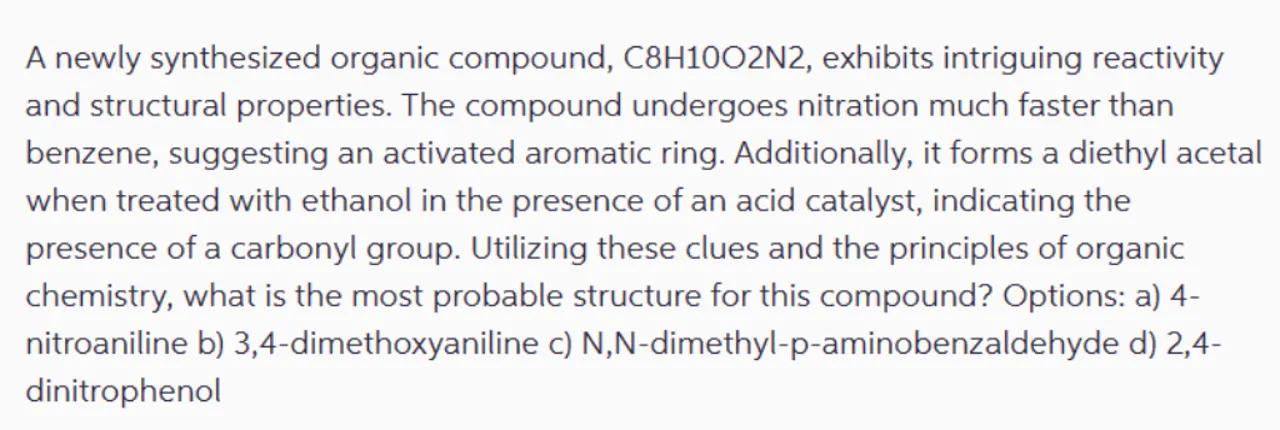
Sia
A newly synthesized organic compound, , exhibits intriguing reactivity and structural properties. The compound undergoes nitration much faster than benzene, suggesting an activated aromatic ring. Additionally, it forms a diethyl acetal when treated with ethanol in the presence of an acid catalyst, indicating the presence of a carbonyl group. Utilizing these clues and the principles of organic chemistry, what is the most probable structure for this compound? Options: a) 4nitroaniline b) 3,4-dimethoxyaniline c) N,N-dimethyl-p-aminobenzaldehyde d) 2,4dinitrophenol

Answer from Sia
Posted over 1 year ago
C
Key Concept
Activated aromatic ring and carbonyl group reactivity
Explanation
The compound's faster nitration than benzene indicates an activated aromatic ring, which is consistent with an electron-donating group attached to the ring, such as an amino group. The formation of a diethyl acetal suggests the presence of an aldehyde group, as ketones generally do not form acetals as readily. Therefore, the most probable structure is N,N-dimethyl-p-aminobenzaldehyde, which has both an activated aromatic ring due to the amino group and a reactive aldehyde group that can form an acetal.
Not the question you are looking for? Ask here!
Enter question by text
Enter question by image
Unlock Smarter Learning with AskSia Super!
Join Super, our all-in-one AI solution that can greatly improve your learning efficiency.
30% higher accuracy than GPT-4o
Entire learning journey support
The most student-friendly features
Study Other Question
